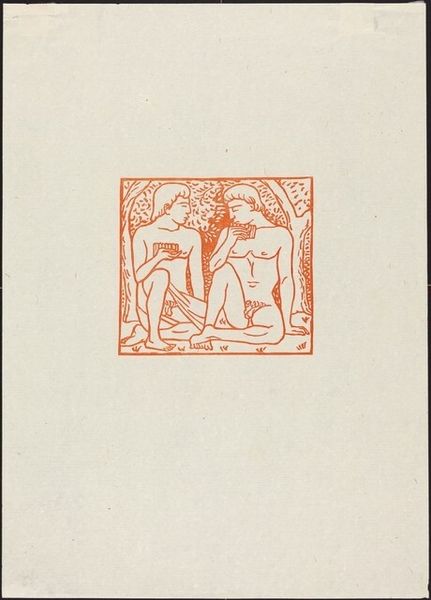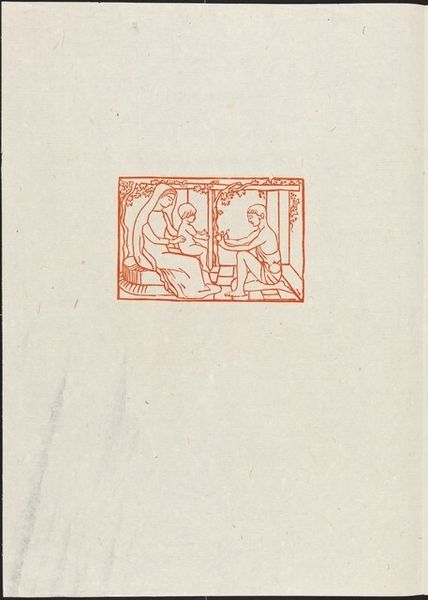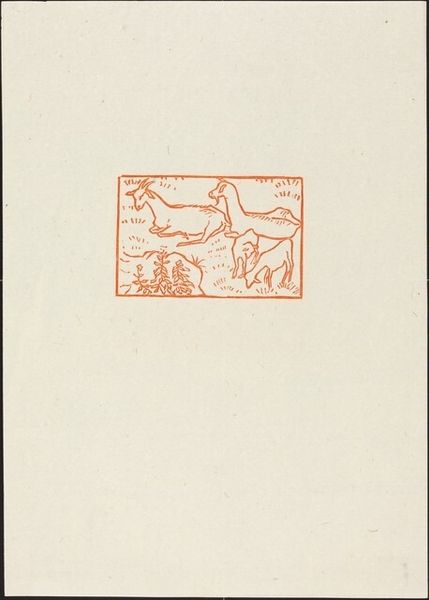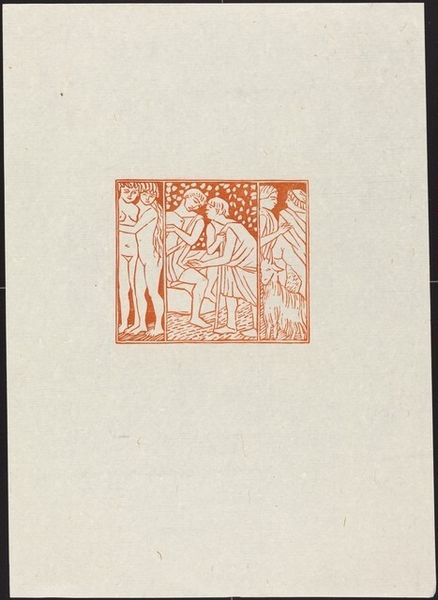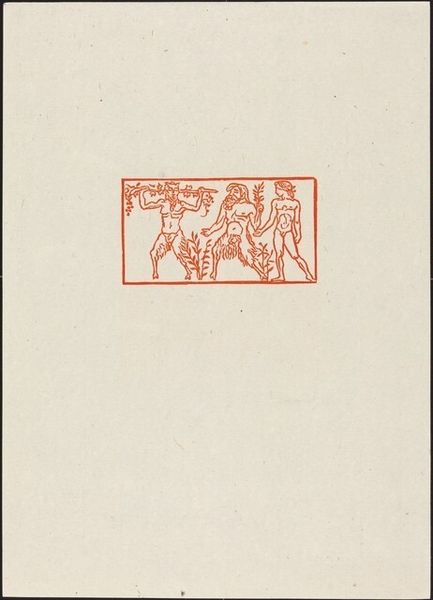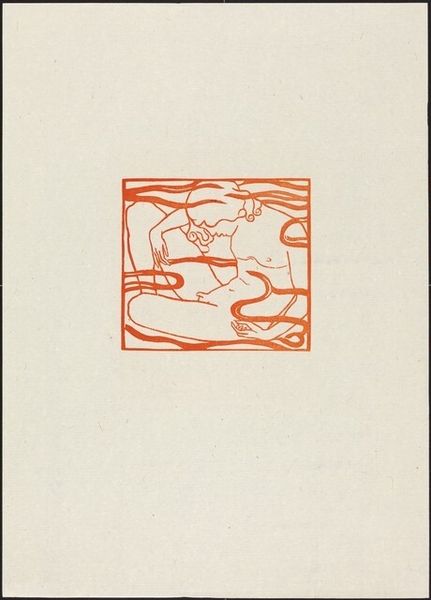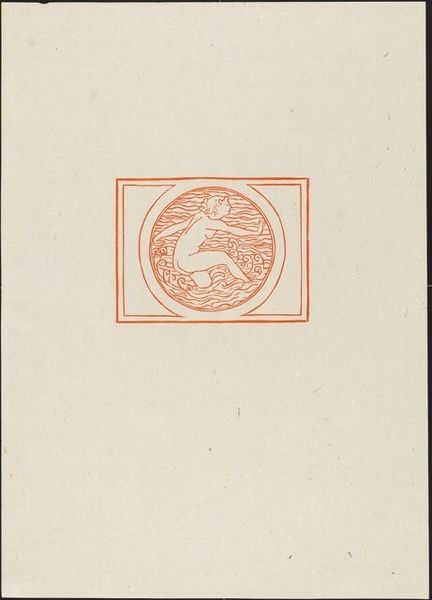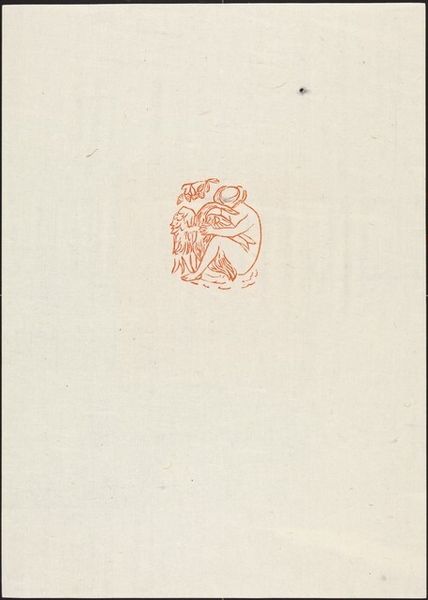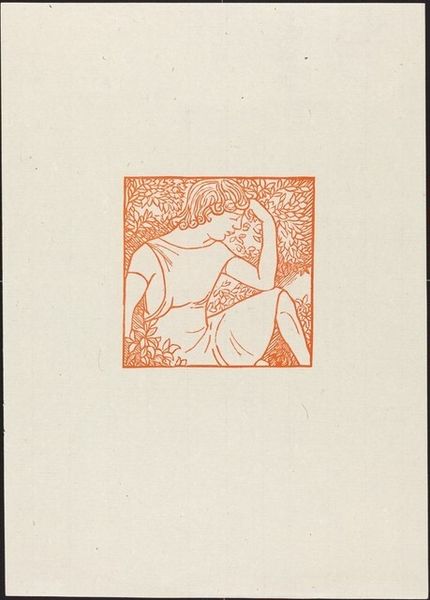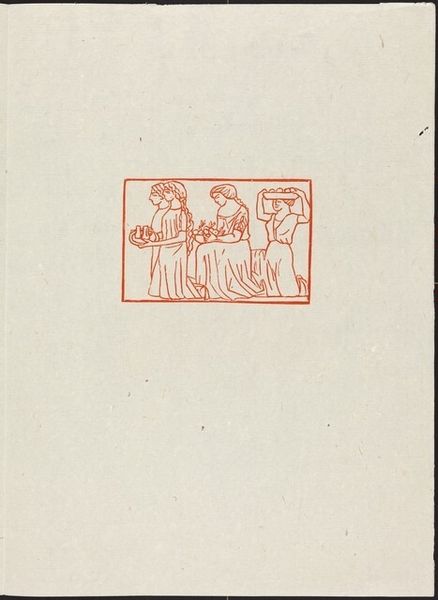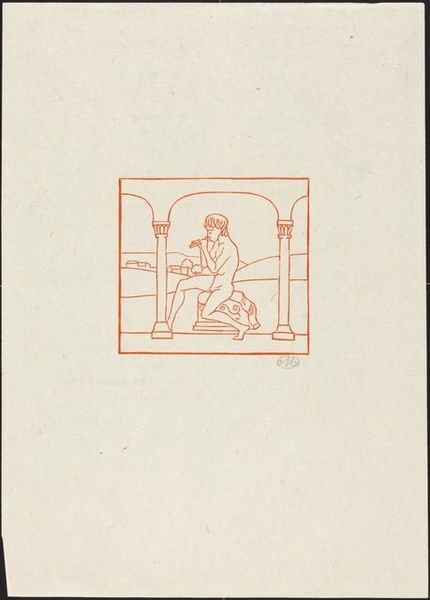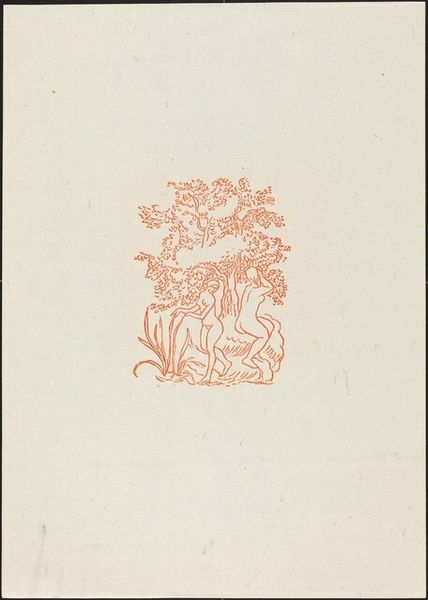
Ninth Eclogue: Tityrus with a Goat (Tityre enfourchant sa chevre) Possibly 1926
0:00
0:00
drawing, print, linocut, intaglio
#
drawing
# print
#
linocut
#
intaglio
#
figuration
#
linocut print
#
classicism
#
line
Copyright: National Gallery of Art: CC0 1.0
Editor: Here we have Aristide Maillol's "Ninth Eclogue: Tityrus with a Goat," likely from 1926. It’s an intaglio linocut print, and the linework feels very clean and deliberate. What strikes you most about this piece? Curator: Well, immediately, the simplified lines and forms, created through the linocut process, draw my attention. How the artist uses a relatively crude method to evoke classical forms is fascinating. The limitations of linocut – the carving, the inking, the pressing – are all essential to understanding its visual impact. Editor: So you see the material limitations as a key part of its artistic success? Curator: Precisely. We can also think about the social context of printmaking. These prints, due to the means of their production, were often more accessible. Maillol, known for his sculptures, utilized this medium to distribute his ideas, his vision of idealized forms, to a wider audience. It speaks to the democratization of art in the early 20th century. Editor: I hadn’t considered the broader accessibility offered by printmaking. So, by using this medium, Maillol wasn't just creating art, but engaging with a specific mode of art production and consumption? Curator: Exactly. The choice of linocut, the potential for reproduction, transforms the artwork itself. Think about how many people could potentially own and engage with this image compared to, say, one of his sculptures. It changes the art's role and influence within society. Does considering the social implications of this choice affect how you see it? Editor: Absolutely. Thinking about how the print could circulate versus a unique sculpture, makes me realize he was participating in the growth of visual culture through mass production. Curator: And that is key: Recognizing the material and social conditions shaping both its creation and reception! Editor: Thank you, that context really transformed my understanding!
Comments
No comments
Be the first to comment and join the conversation on the ultimate creative platform.
